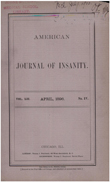Treating the traumatic memories of patients with dissociative identity disorder
Abstract
OBJECTIVE: The author uses clinical experience informed by research findings to suggest approaches to the treatment of the traumatic memories of patients with dissociative identity disorder. METHOD: Recent findings in the treatment of patients with this disorder and current considerations with regard to memories of childhood trauma are used to develop recommended approaches. RESULTS: Treatment of traumatic memories appears crucial in the recovery of patients with dissociative identity disorder, even though the reported memories may not be historically accurate. Criteria are available for determining whether a patient with the disorder is able to undertake such efforts, and methods such as fractionated abreaction have been developed to make the process less unsettling. CONCLUSIONS: Despite the difficulties posed by the vulnerability of patients with dissociative identity disorder to decompensation when working with traumatic material and the vicissitudes of autobiographical memory, modern therapeutic approaches allow the processing of such patients' traumatic material in a manner that reduces the likelihood of disruptive events and the misuse of recovered material.
Access content
To read the fulltext, please use one of the options below to sign in or purchase access.- Personal login
- Institutional Login
- Sign in via OpenAthens
- Register for access
-
Please login/register if you wish to pair your device and check access availability.
Not a subscriber?
PsychiatryOnline subscription options offer access to the DSM-5 library, books, journals, CME, and patient resources. This all-in-one virtual library provides psychiatrists and mental health professionals with key resources for diagnosis, treatment, research, and professional development.
Need more help? PsychiatryOnline Customer Service may be reached by emailing [email protected] or by calling 800-368-5777 (in the U.S.) or 703-907-7322 (outside the U.S.).



